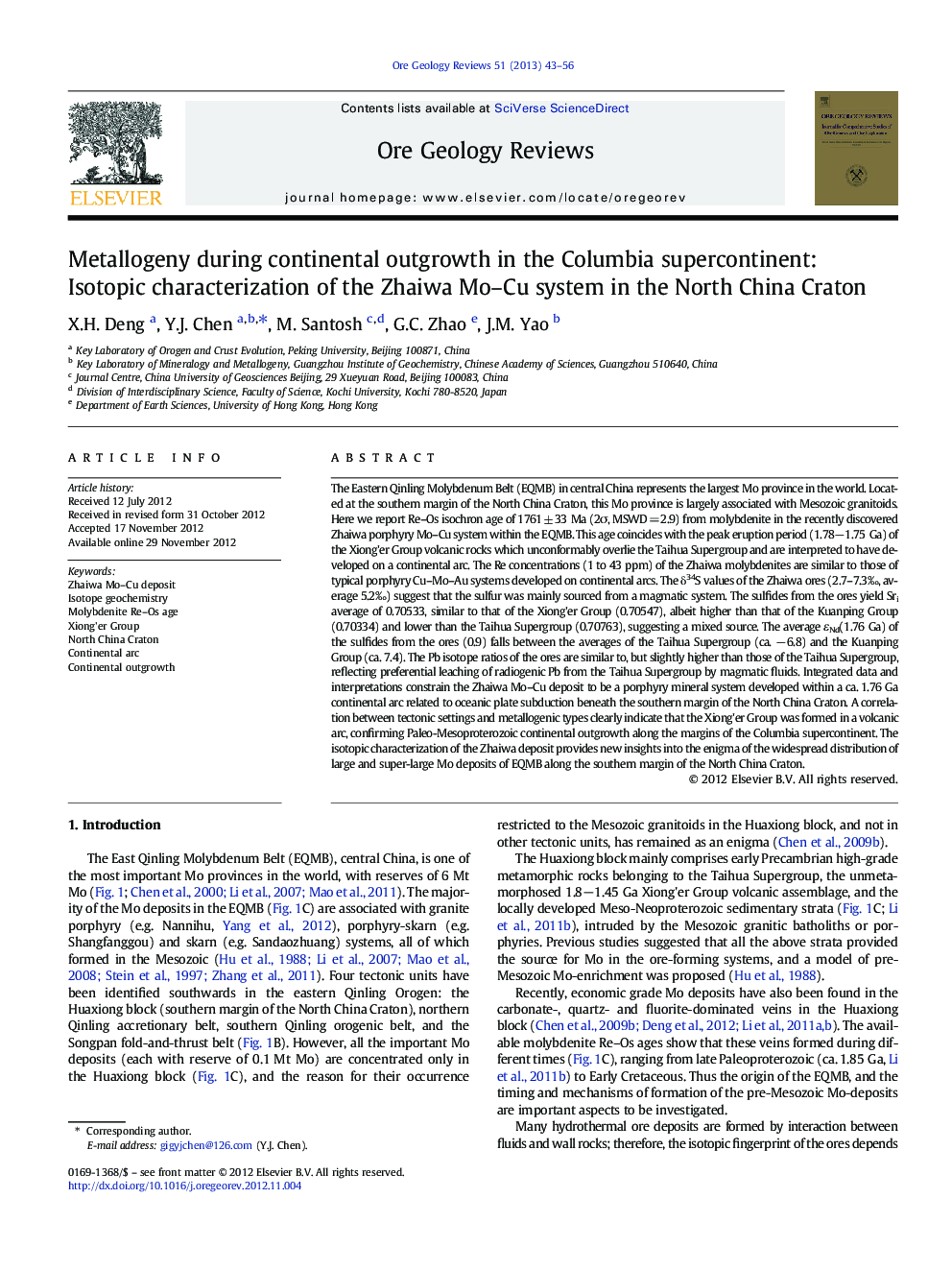| کد مقاله | کد نشریه | سال انتشار | مقاله انگلیسی | نسخه تمام متن |
|---|---|---|---|---|
| 4697570 | 1637252 | 2013 | 14 صفحه PDF | دانلود رایگان |

The Eastern Qinling Molybdenum Belt (EQMB) in central China represents the largest Mo province in the world. Located at the southern margin of the North China Craton, this Mo province is largely associated with Mesozoic granitoids. Here we report Re–Os isochron age of 1761 ± 33 Ma (2σ, MSWD = 2.9) from molybdenite in the recently discovered Zhaiwa porphyry Mo–Cu system within the EQMB. This age coincides with the peak eruption period (1.78−1.75 Ga) of the Xiong'er Group volcanic rocks which unconformably overlie the Taihua Supergroup and are interpreted to have developed on a continental arc. The Re concentrations (1 to 43 ppm) of the Zhaiwa molybdenites are similar to those of typical porphyry Cu–Mo–Au systems developed on continental arcs. The δ34S values of the Zhaiwa ores (2.7–7.3‰, average 5.2‰) suggest that the sulfur was mainly sourced from a magmatic system. The sulfides from the ores yield Sri average of 0.70533, similar to that of the Xiong'er Group (0.70547), albeit higher than that of the Kuanping Group (0.70334) and lower than the Taihua Supergroup (0.70763), suggesting a mixed source. The average εNd(1.76 Ga) of the sulfides from the ores (0.9) falls between the averages of the Taihua Supergroup (ca. − 6.8) and the Kuanping Group (ca. 7.4). The Pb isotope ratios of the ores are similar to, but slightly higher than those of the Taihua Supergroup, reflecting preferential leaching of radiogenic Pb from the Taihua Supergroup by magmatic fluids. Integrated data and interpretations constrain the Zhaiwa Mo–Cu deposit to be a porphyry mineral system developed within a ca. 1.76 Ga continental arc related to oceanic plate subduction beneath the southern margin of the North China Craton. A correlation between tectonic settings and metallogenic types clearly indicate that the Xiong'er Group was formed in a volcanic arc, confirming Paleo-Mesoproterozoic continental outgrowth along the margins of the Columbia supercontinent. The isotopic characterization of the Zhaiwa deposit provides new insights into the enigma of the widespread distribution of large and super-large Mo deposits of EQMB along the southern margin of the North China Craton.
Figure optionsDownload as PowerPoint slideHighlights
► We report 1.76 Ga Re–Os age from the Zhaiwa porphyry Mo–Cu system.
► S–Sr–Nd–Pb isotopes define a continental arc setting for the Zhaiwa deposit.
► The Xiong'er Group volcanic rocks developed on a continental arc.
► Paleoproterozoic outgrowth occurred along the southern margin of North China craton.
► The Eastern Qinling Mo Belt experienced intensive pre-Mesozoic Mo-enrichment.
Journal: Ore Geology Reviews - Volume 51, June 2013, Pages 43–56